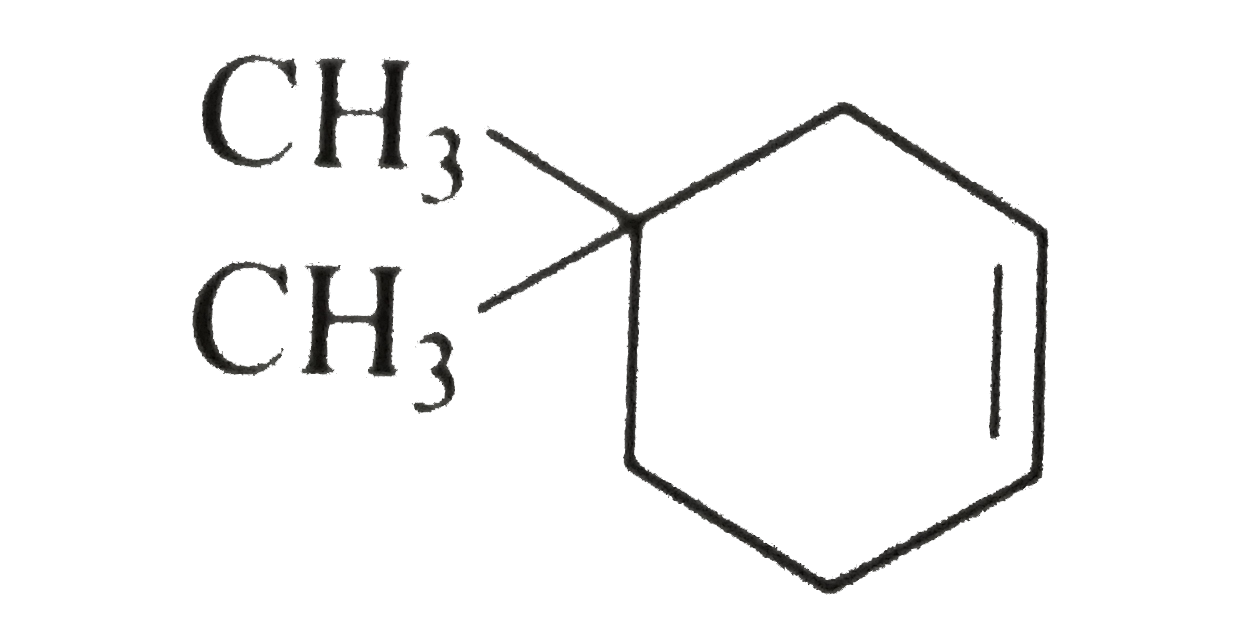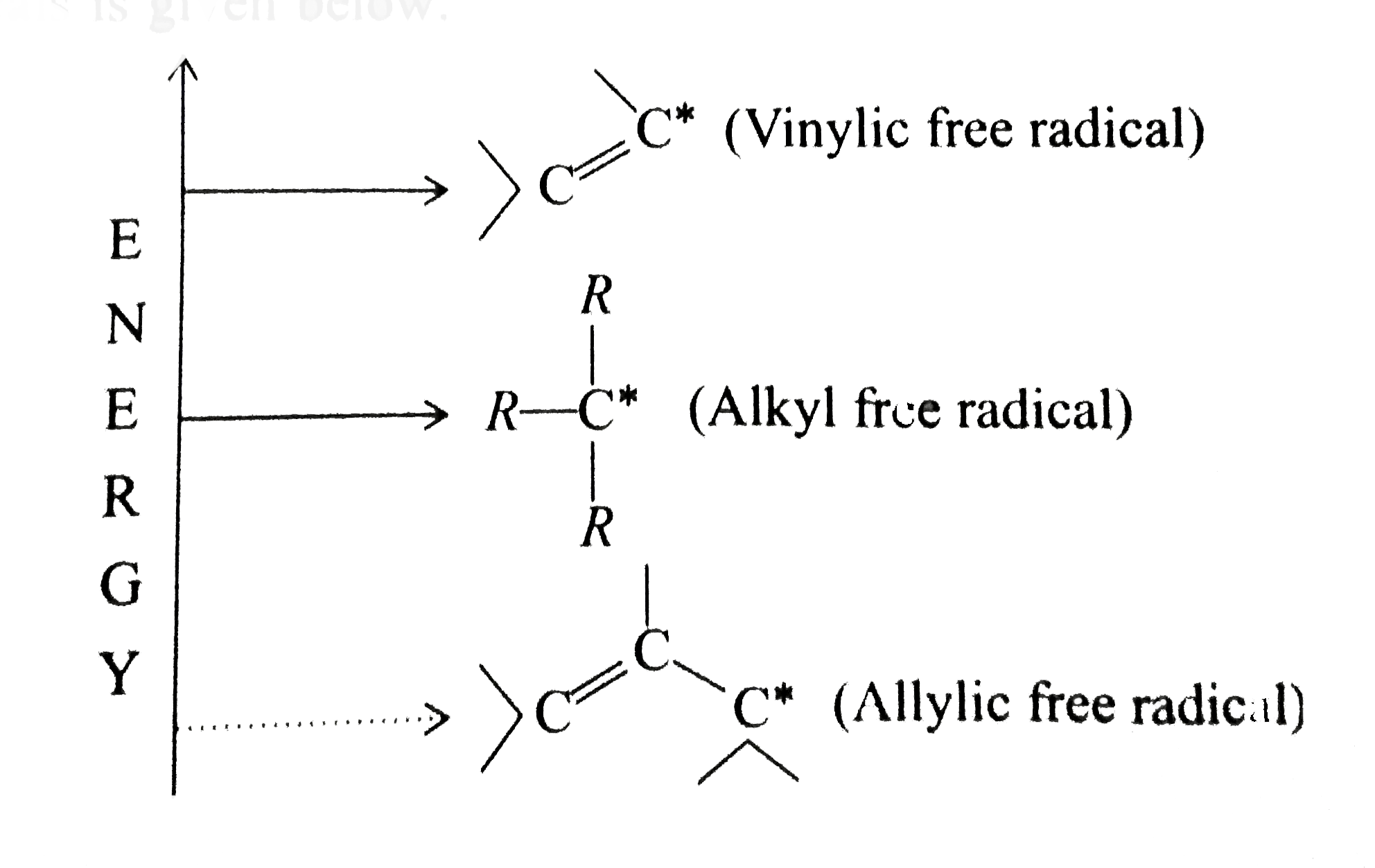Karl Ziegler reported that alkenes react with N-bromosuccinimide (NBS) in presence of light to give products resulting from substitution of hydrogen by bromine at the allylic position i.e., the position next to the double bond.
Let us consider the halogenation of cyclohexane.

Energy level diagram for allylic vinylic and alkylic free redicals is given below:


(4,4-Dimethyl cyclohexene)
Above compound on treatment with NBS gives allylic bromides . How many product (s) will be obtained in this reaction?
A
One
B
Two
C
Three
D
Four
Video Solution
Text Solution
The correct Answer is:C
Three products will be obtained whose structures as :

|
Topper's Solved these Questions
- HALOALKANES AND HALOARENES BOOK - OP TANDONCHAPTER - HALOALKANES AND HALOARENES EXERCISE - Single Interger answer type questions
14 Videos
- HALOALKANES AND HALOARENES BOOK - OP TANDONCHAPTER - HALOALKANES AND HALOARENES EXERCISE - Matrix -Match Type Questions
8 Videos
- ELECTROCHEMISTRYBOOK - OP TANDONCHAPTER - ELECTROCHEMISTRYEXERCISE - Matrix-Matching Type Question
3 Videos
- ISOMERISM (STRUCTURAL AND STEROISOMERISM)BOOK - OP TANDONCHAPTER - ISOMERISM (STRUCTURAL AND STEROISOMERISM)EXERCISE - INTEGER
7 Videos
Similar Questions
Knowledge Check
Karl Ziegler reported that alkenes react with N-bromosuccinimide (NBS) in presence of light to give products resulting from substitution of hydrogen by bromine at the allylic position i.e., the position next to the double bond.
Let us consider the halogenation of cyclohexane.

Energy level diagram for allylic vinylic and alkylic free redicals is given below:

Select the correct statement(s) among the following :Aallylic free radical is stabilised by delocalisationBVinylic free radical is stablilised by hyperconjugationCAlkyl free radicals are stabilised by hyperconjugationDAlkylic free radical is stabilised by hyperconjugationKarl Ziegler reported that alkenes react with N-bromosuccinimide (NBS) in presence of light to give products resulting from substitution of hydrogen by bromine at the allylic position i.e., the position next to the double bond.
Let us consider the halogenation of cyclohexane.

Energy level diagram for allylic vinylic and alkylic free redicals is given below:

Which of the following sequences is correct about C-H bond energy ?A(C-H)Vinylic>(C-H) Alkylic > (C-H) AllylicB(C-H) Vinuylic <(C-H) Alkylic < (C-H) AllkylicC(C-H) Alkylic <(C-H)Vinylic <(C-H) AllylicD(C-H) Vinylic =(C-H) Alkylic =(C-H)AllylicKarl Ziegler reported that alkenes react with N-bromosuccinimide (NBS) in presence of light to give products resulting from substitution of hydrogen by bromine at the allylic position i.e., the position next to the double bond.
Let us consider the halogenation of cyclohexane.

Energy level diagram for allylic vinylic and alkylic free redicals is given below:

Consider the three types of C-H bonds in cyclohexene.

Which of the following is/arecorrectly matched?AA-Vinylic C-H bondBB-Allylic C-H bondCC-Alkylic C-H bondDAll of these
Toluene reacts with bromine in the presence of the light to give benzyl bromide, while in presence of FeBr3 it gives p-bromotoluene. Give explanation for the above observation.
View SolutionOrder of stability of vinyl , allyl, teriary radicals is
View SolutionAlkylation of phenoxide anion with allyl chloride gives
View Solutionwhen vinyl and allyl are joined each other, we get:
View SolutionWhich of the following give allylic substitution product?
View Solution
